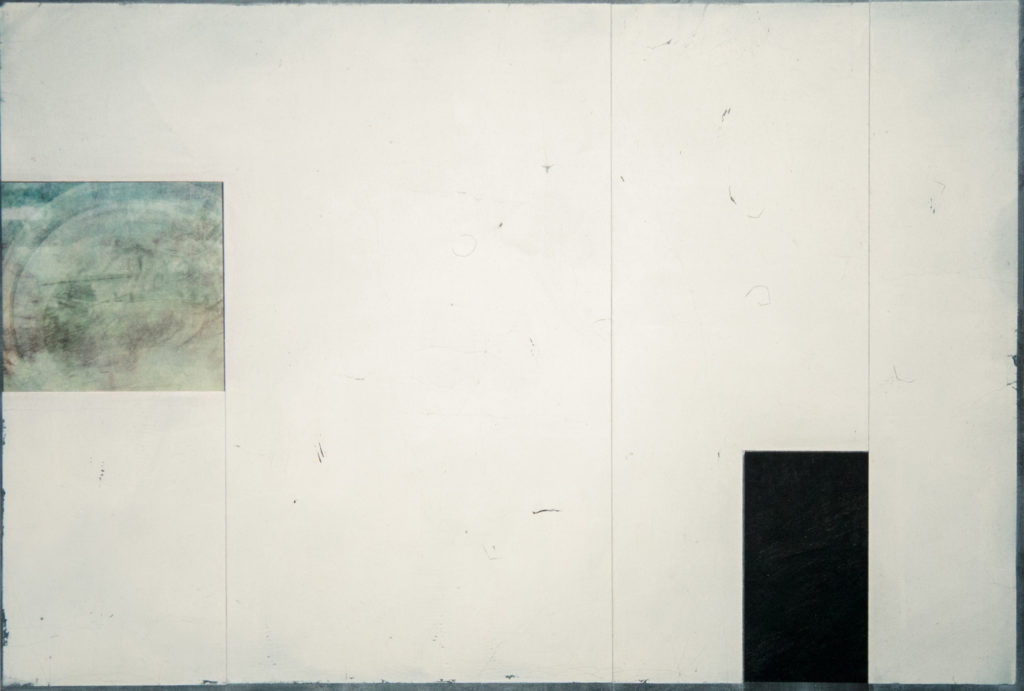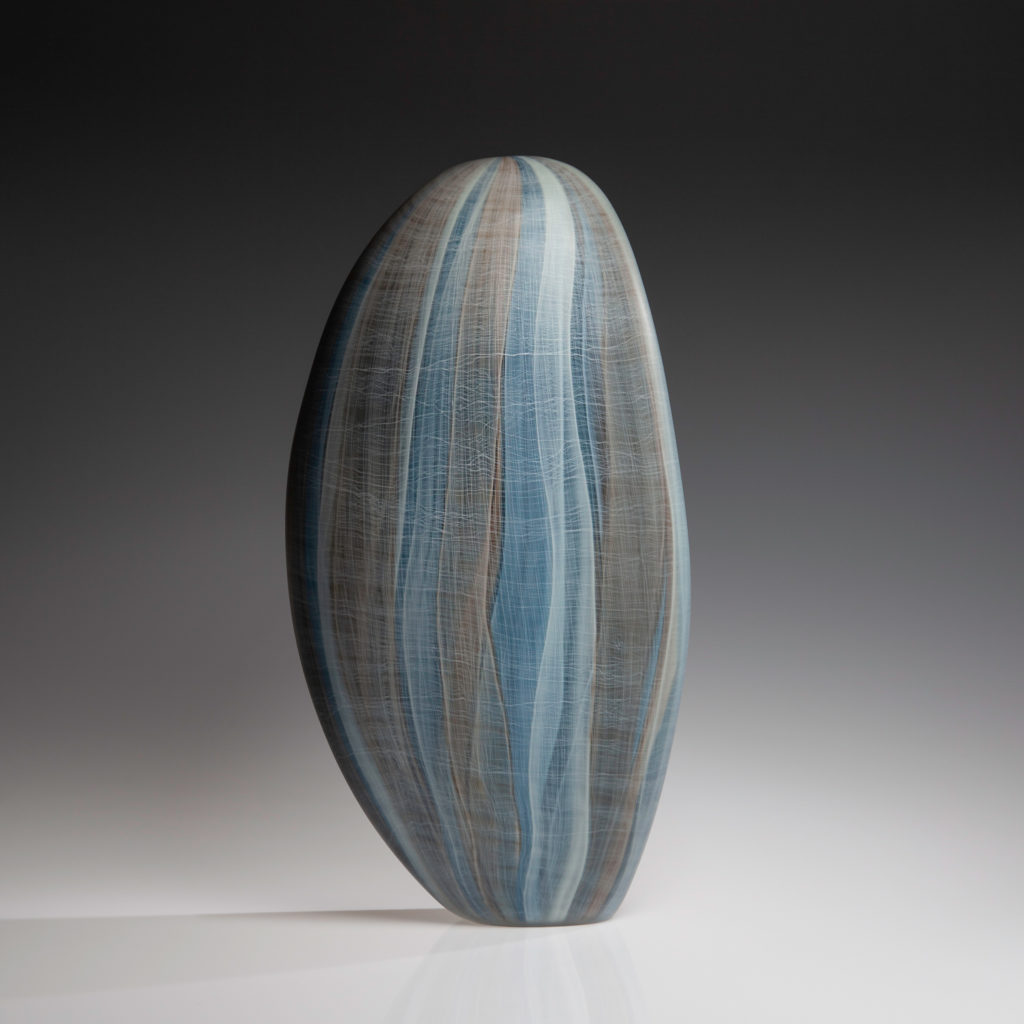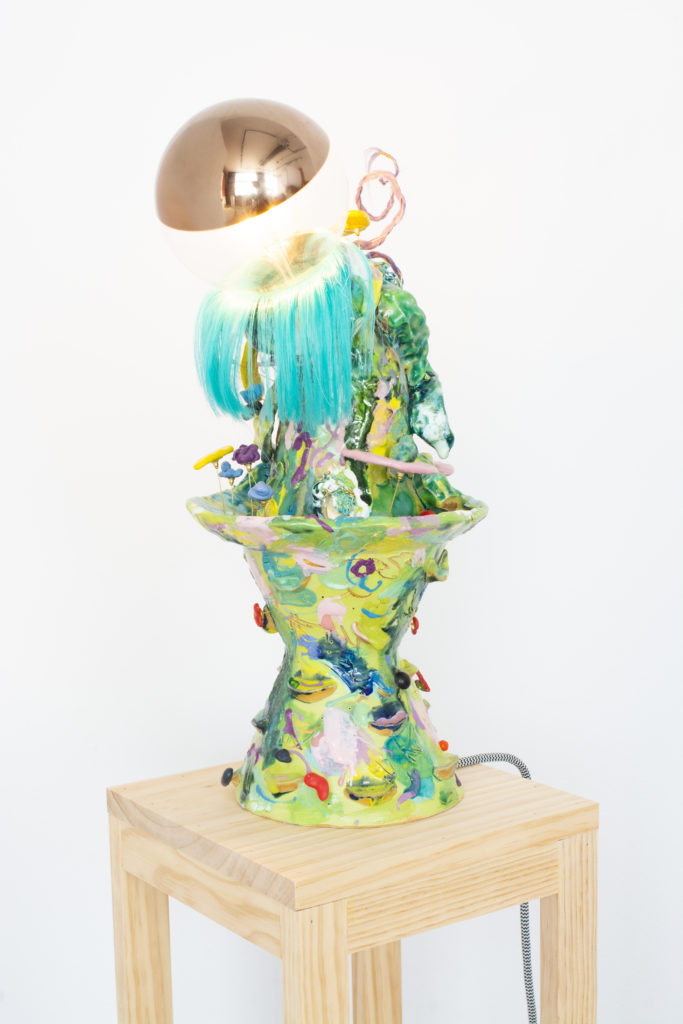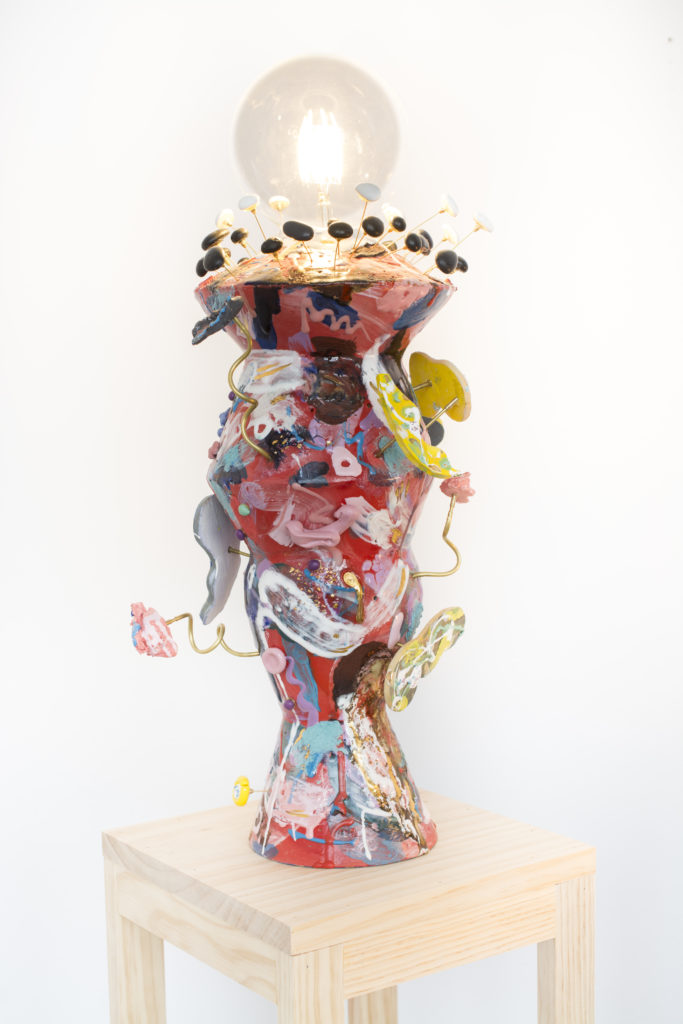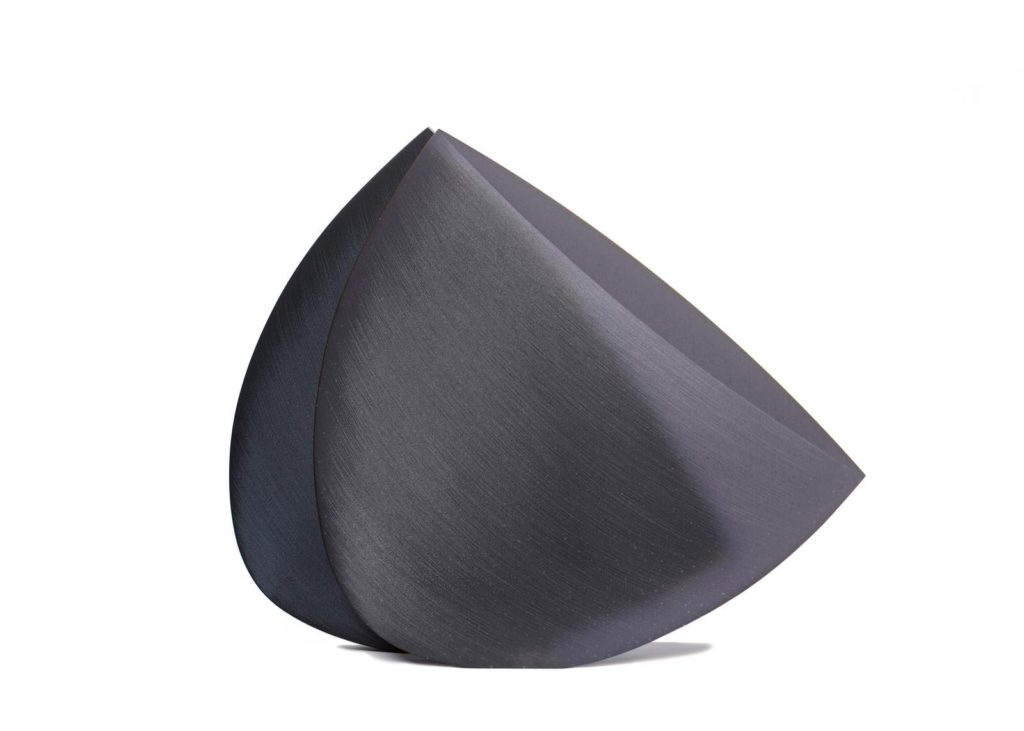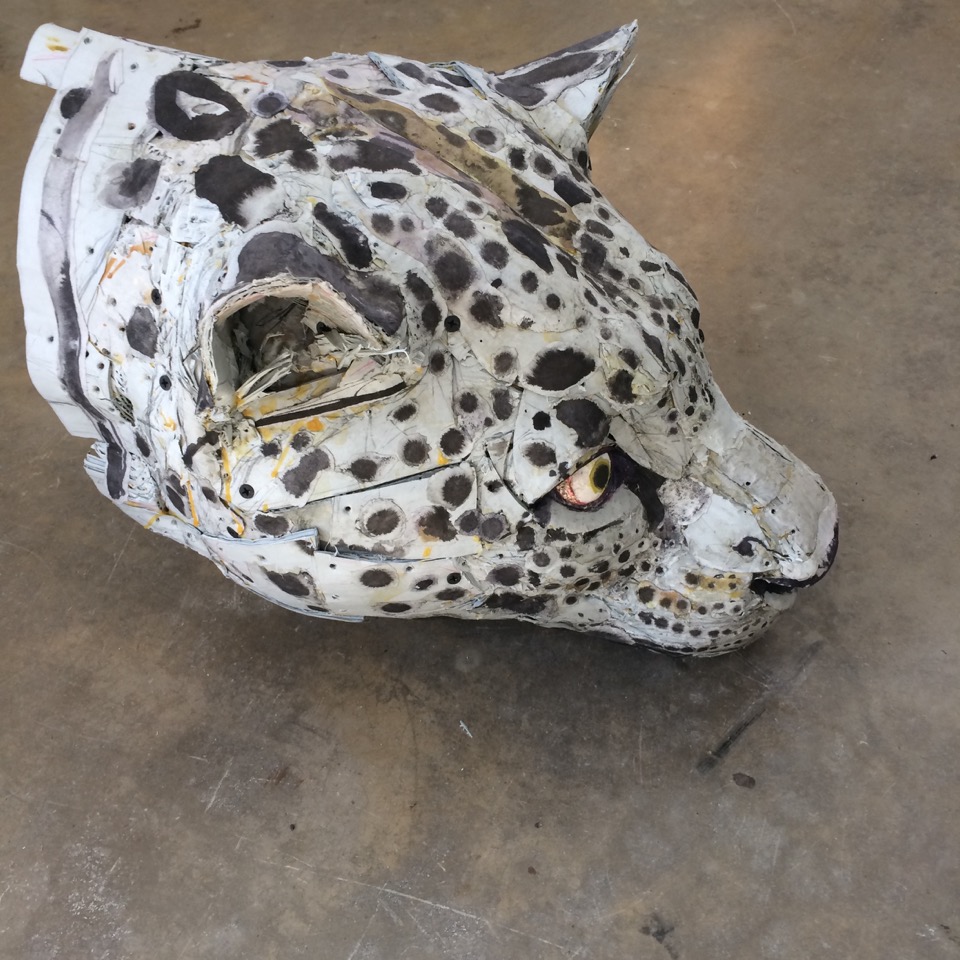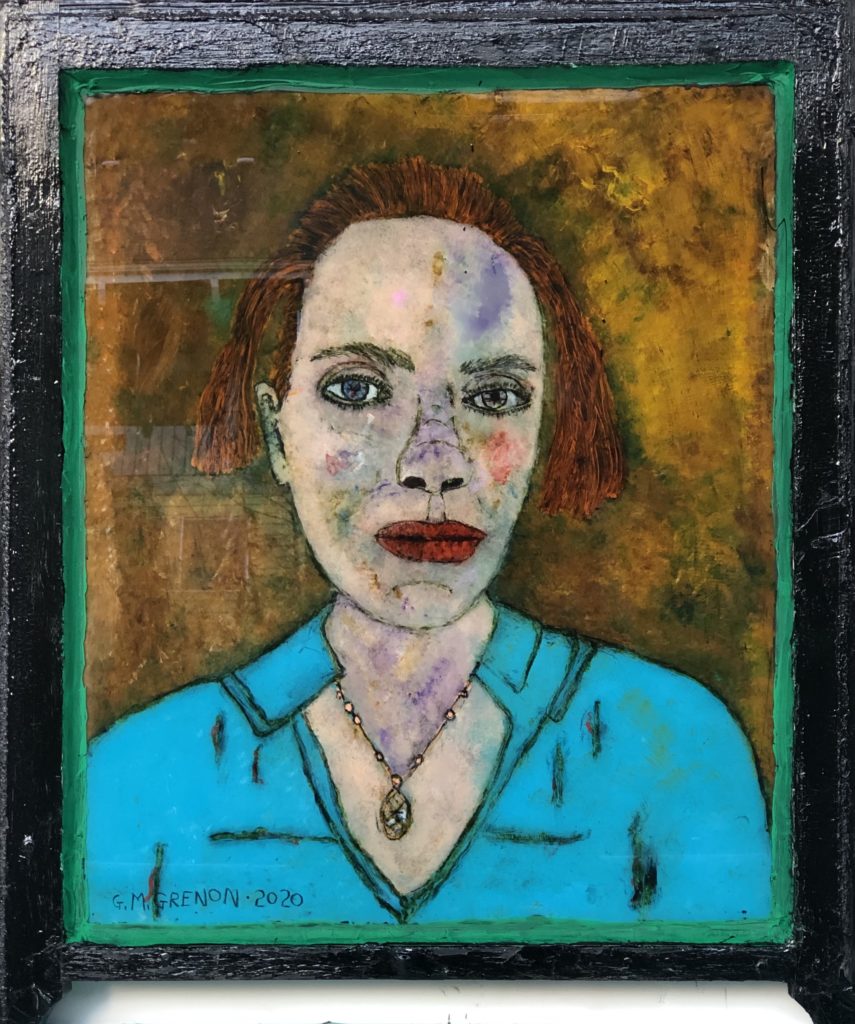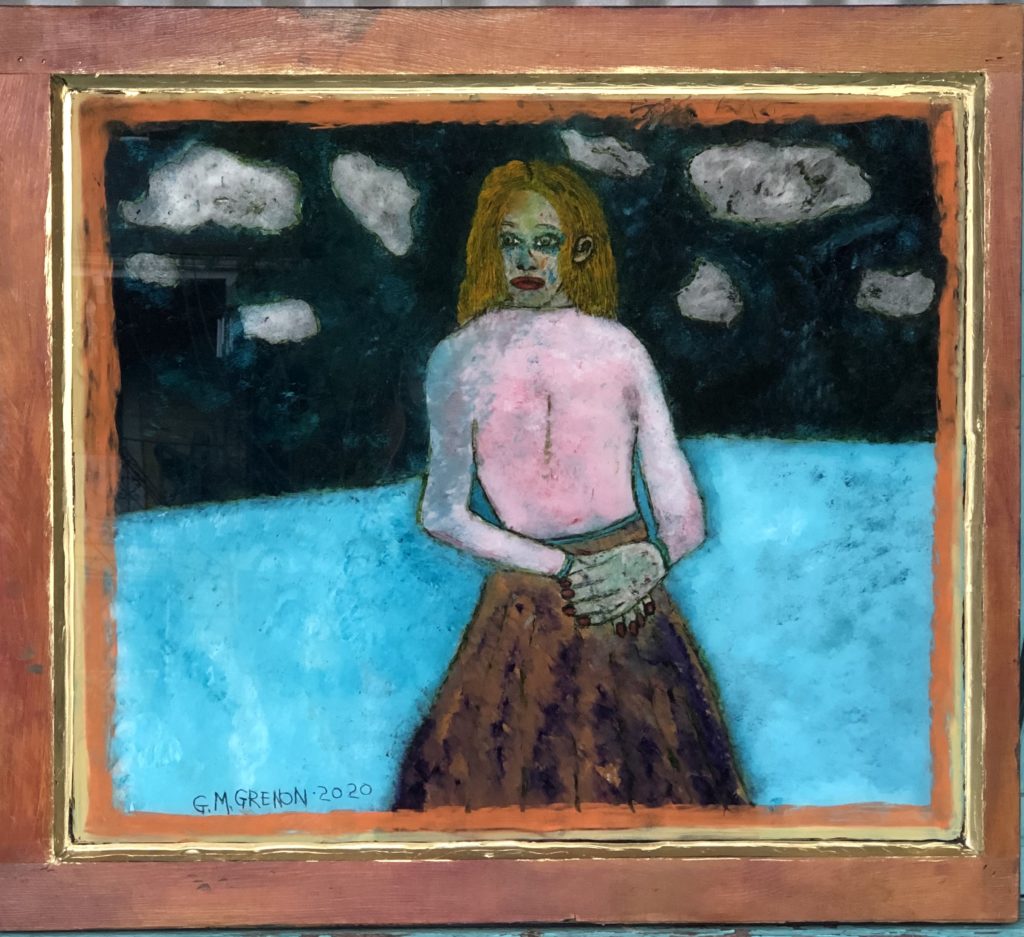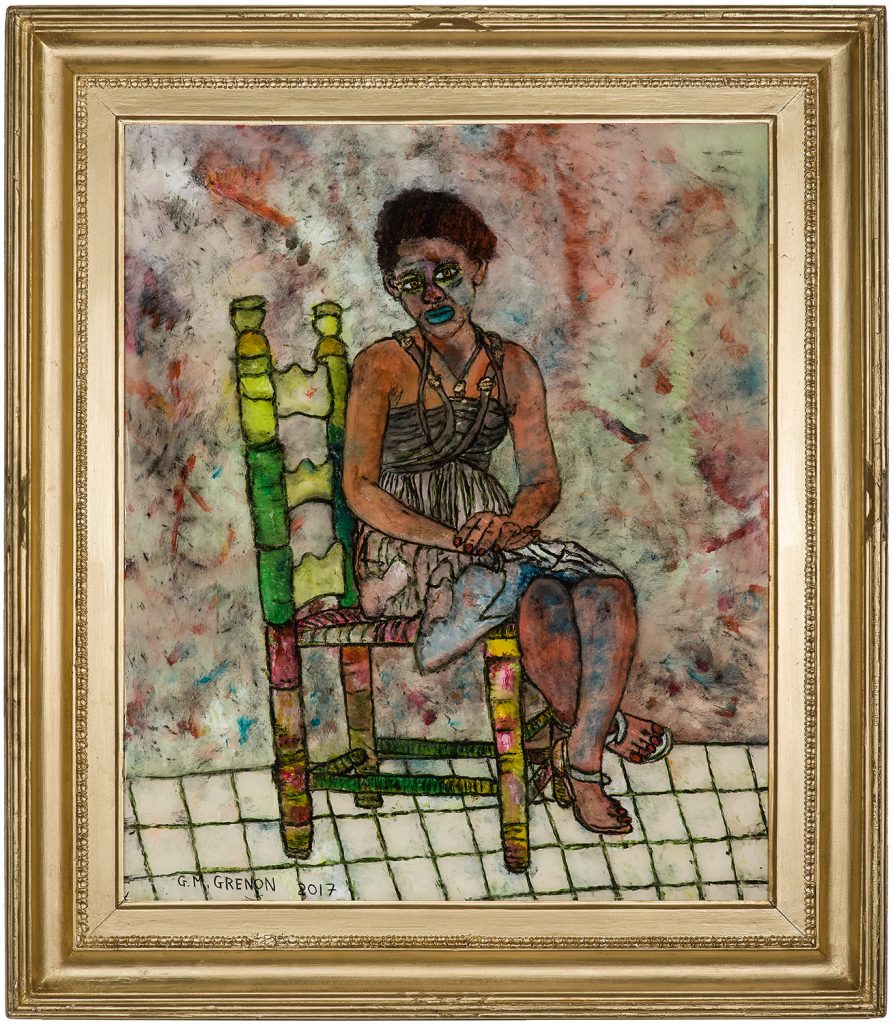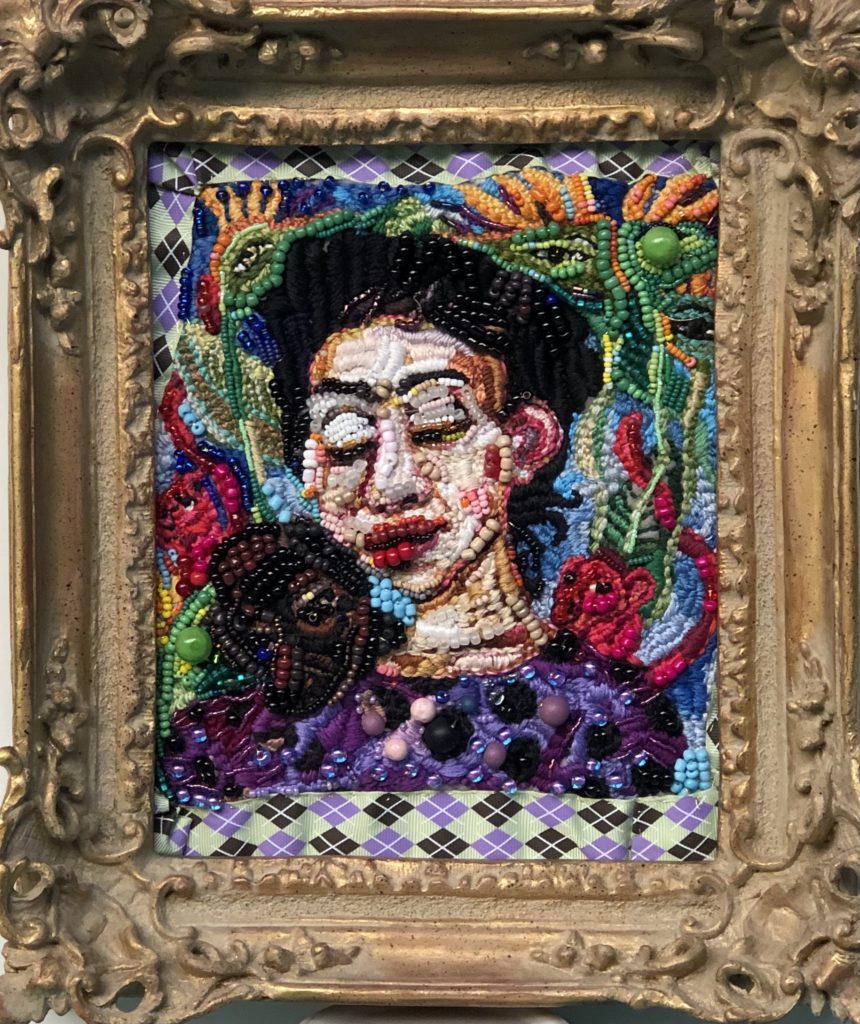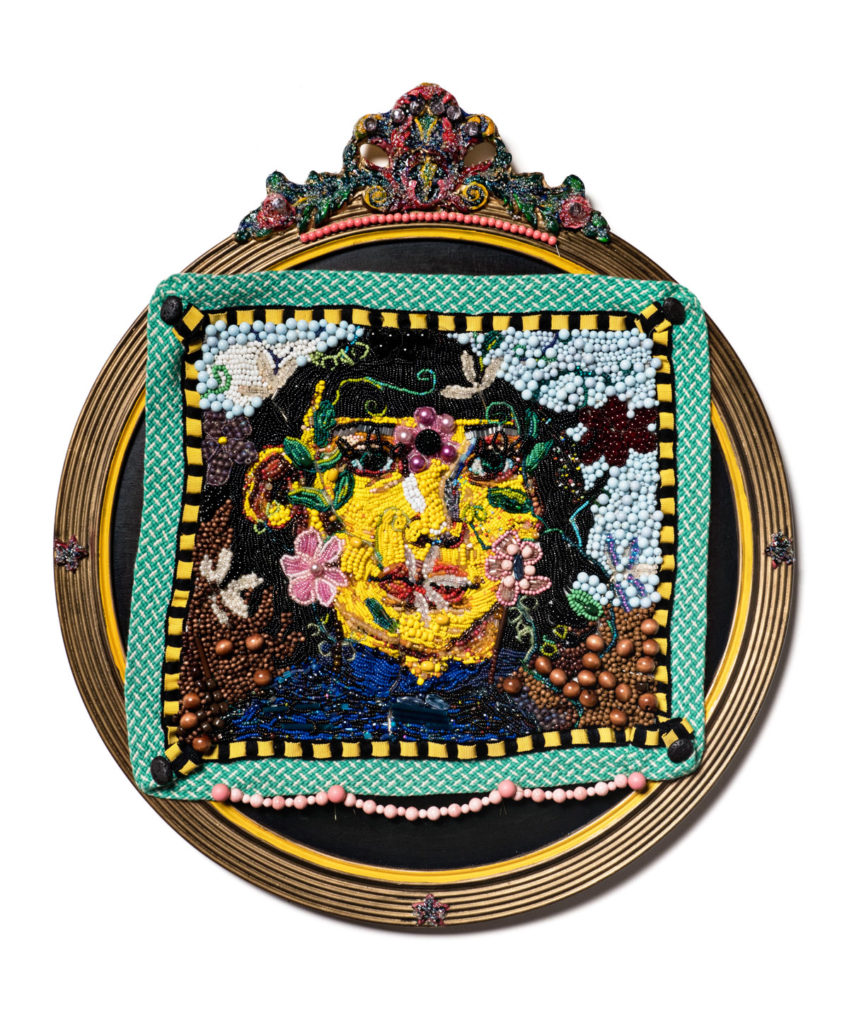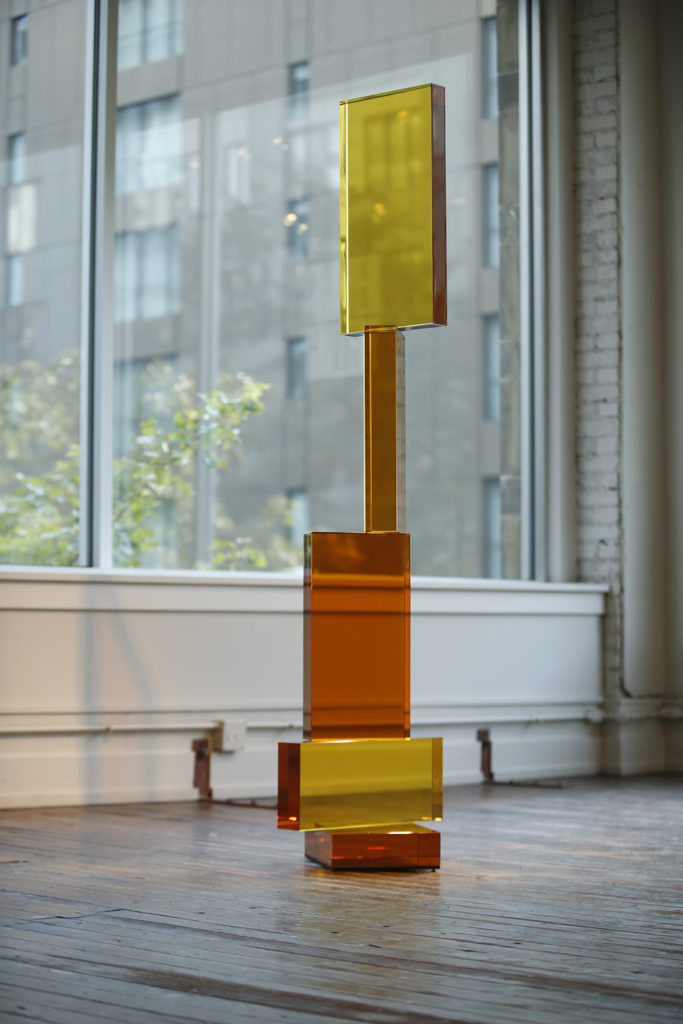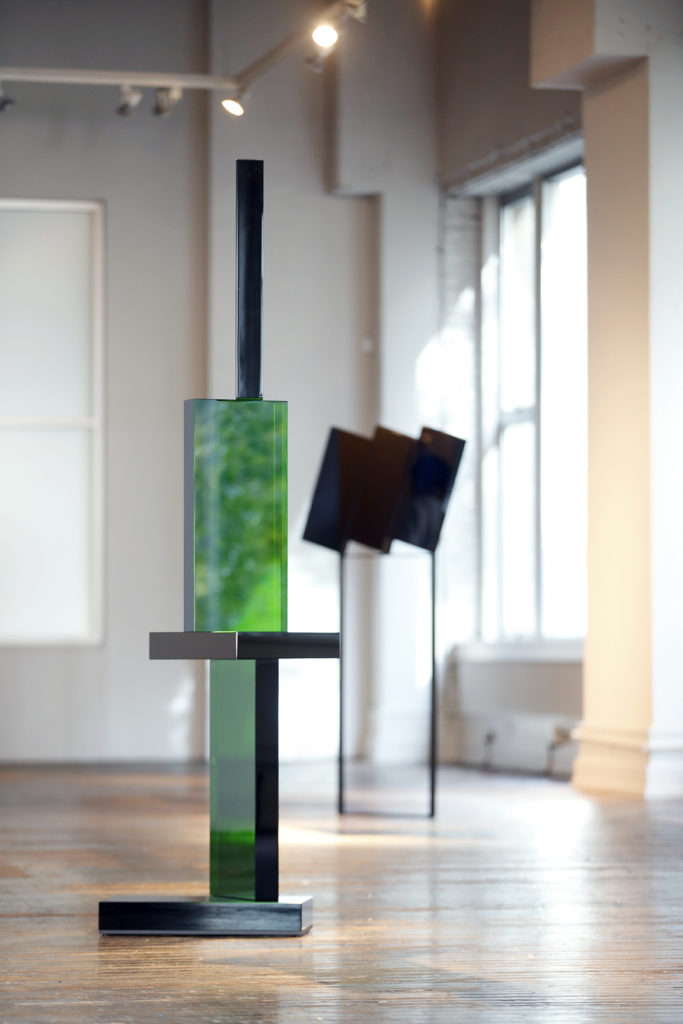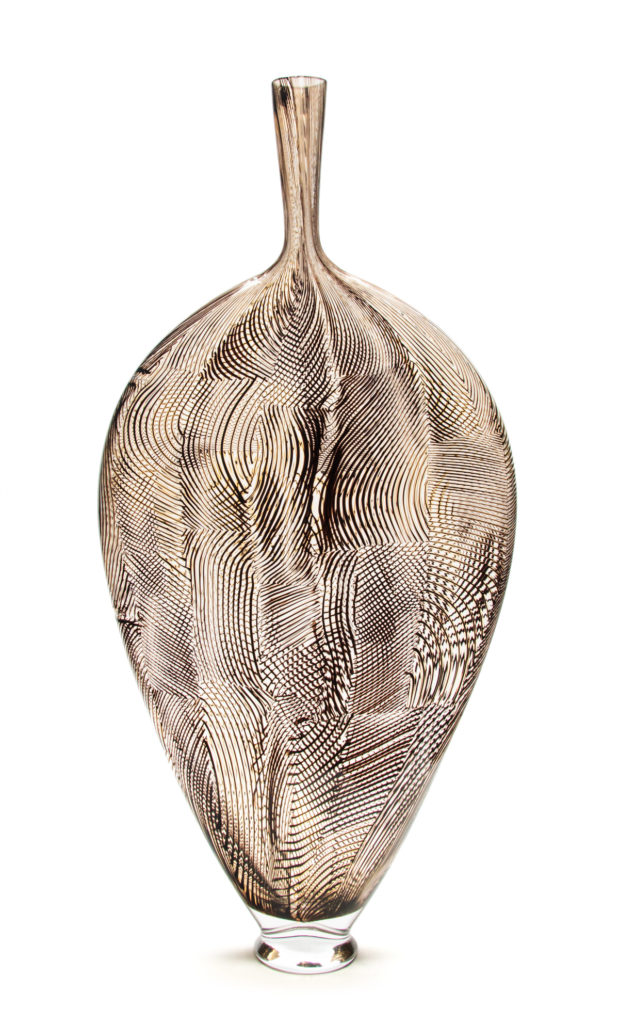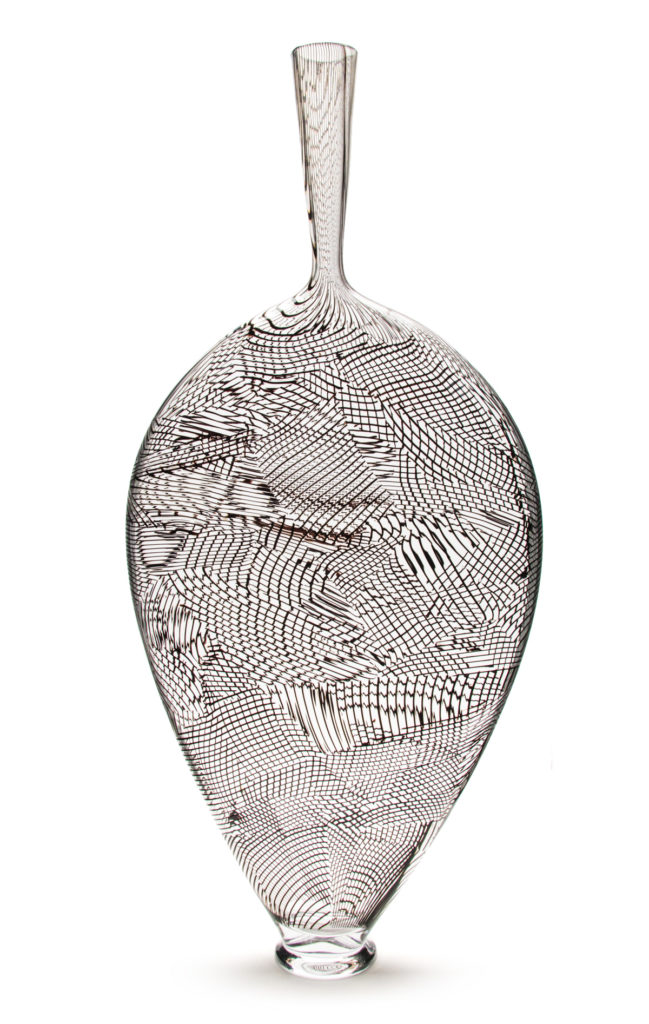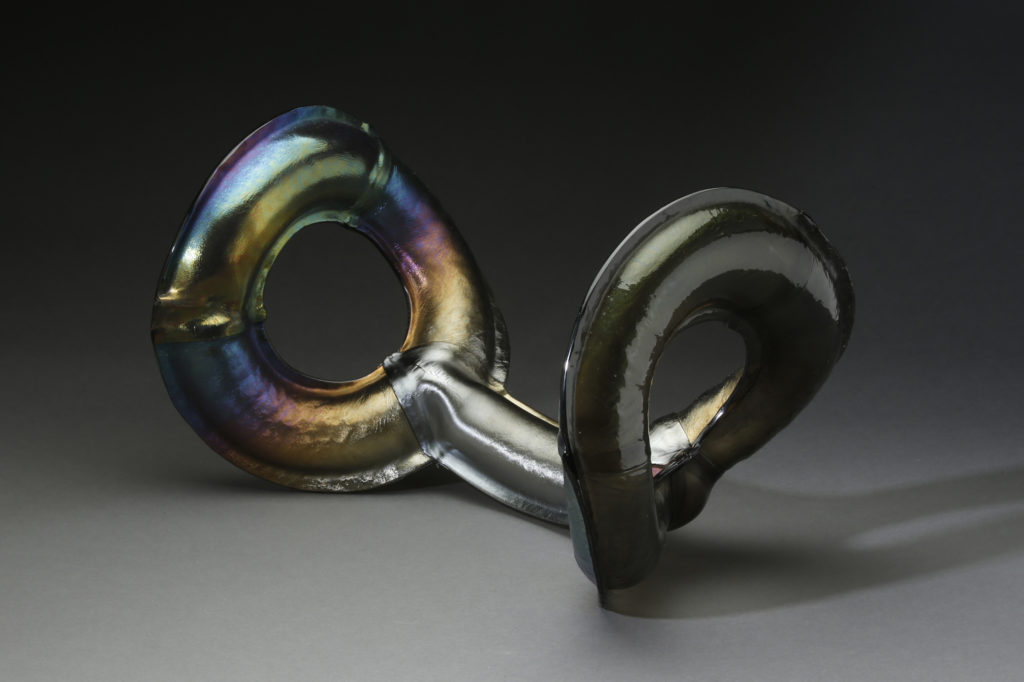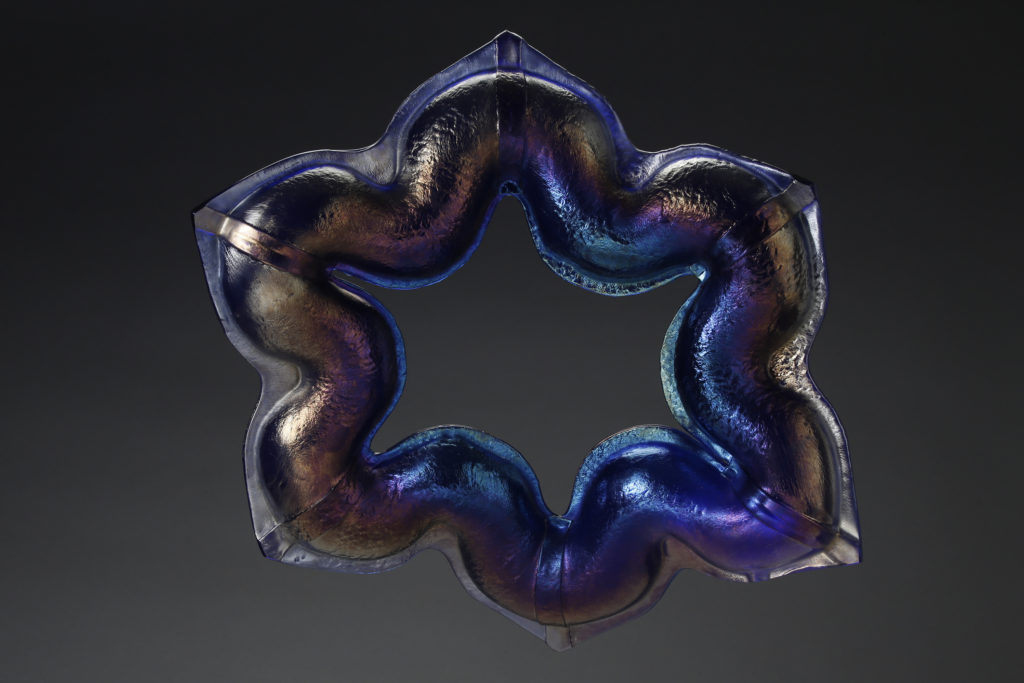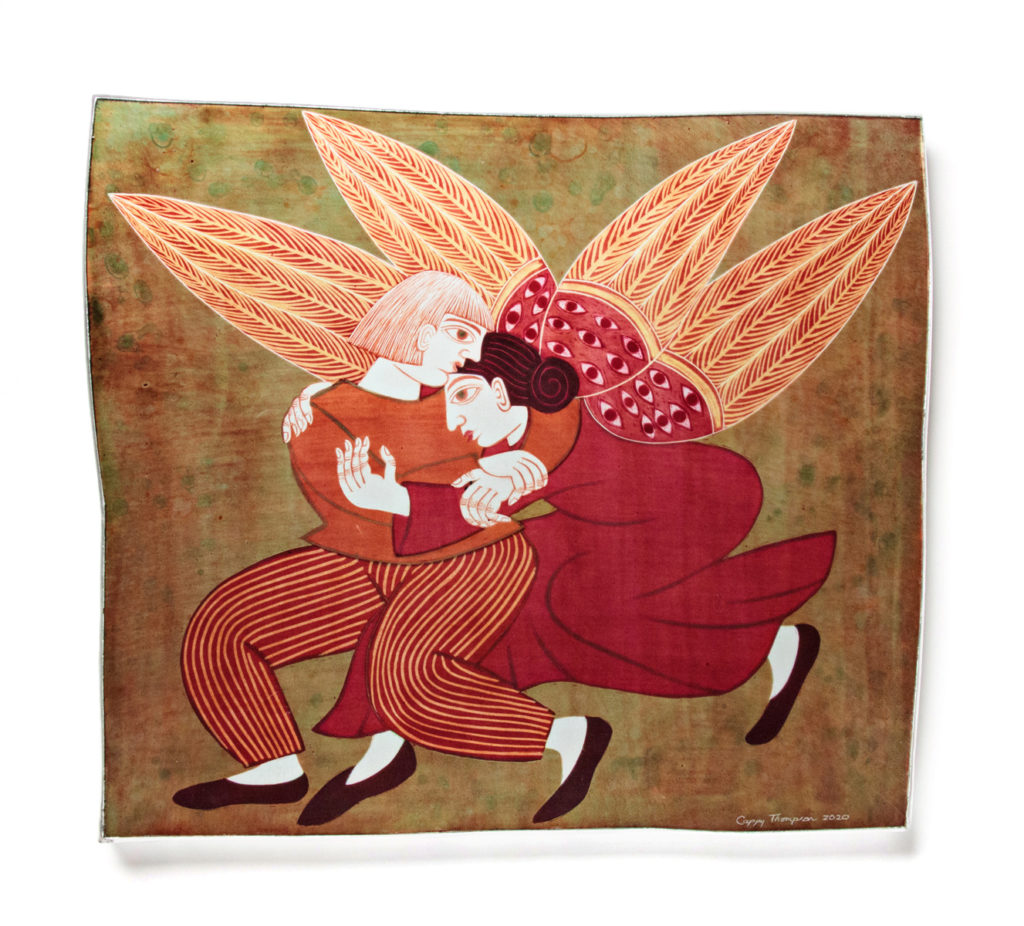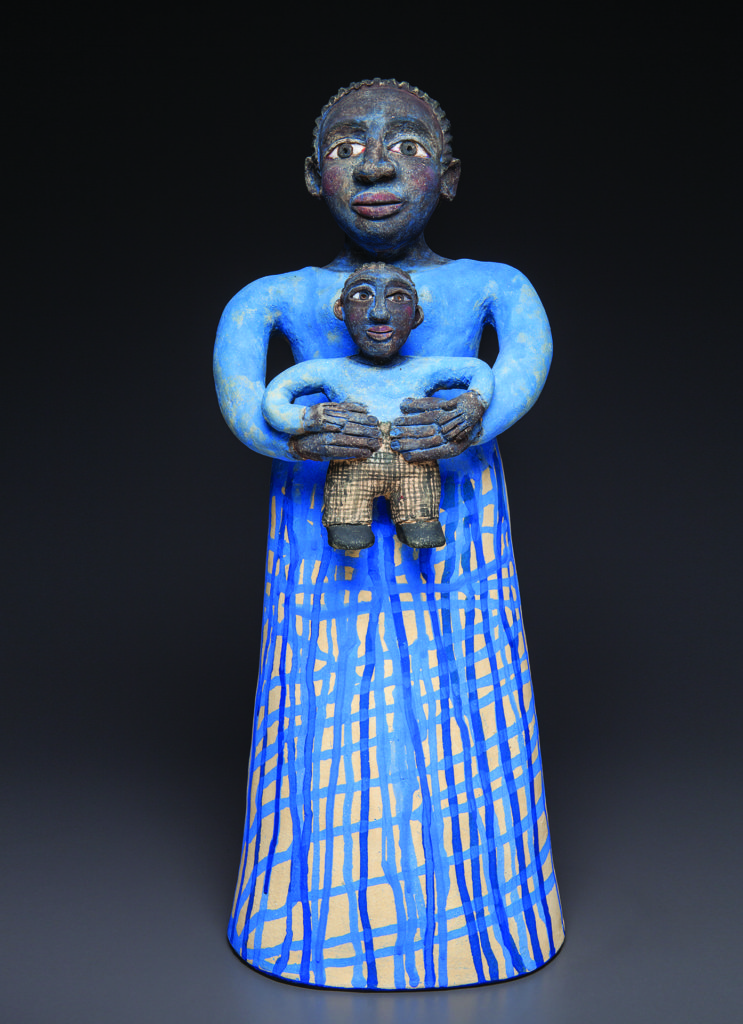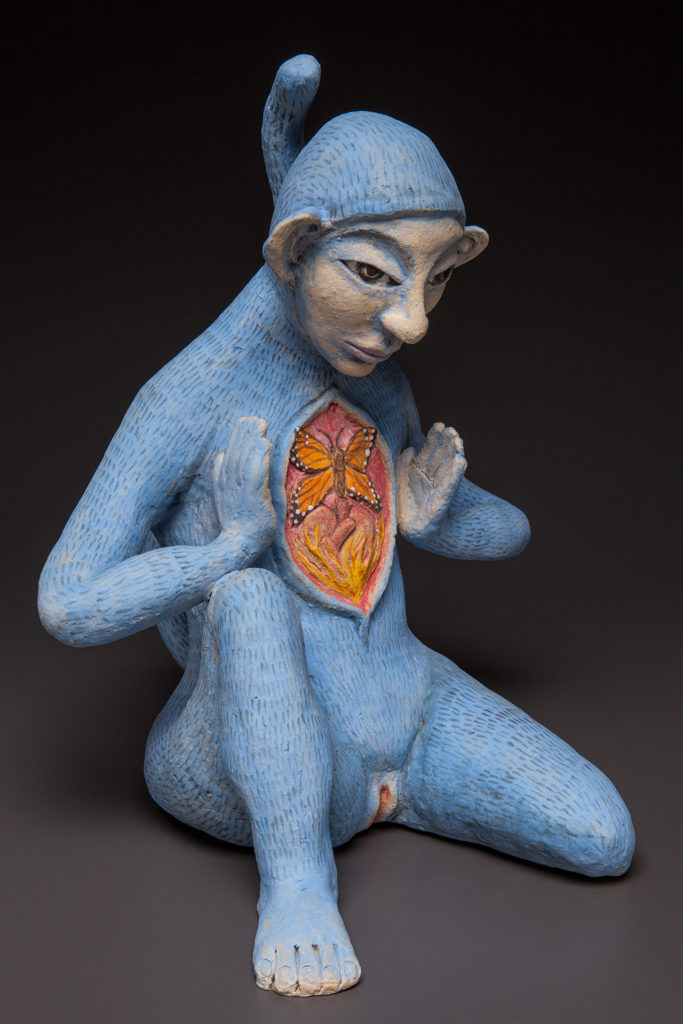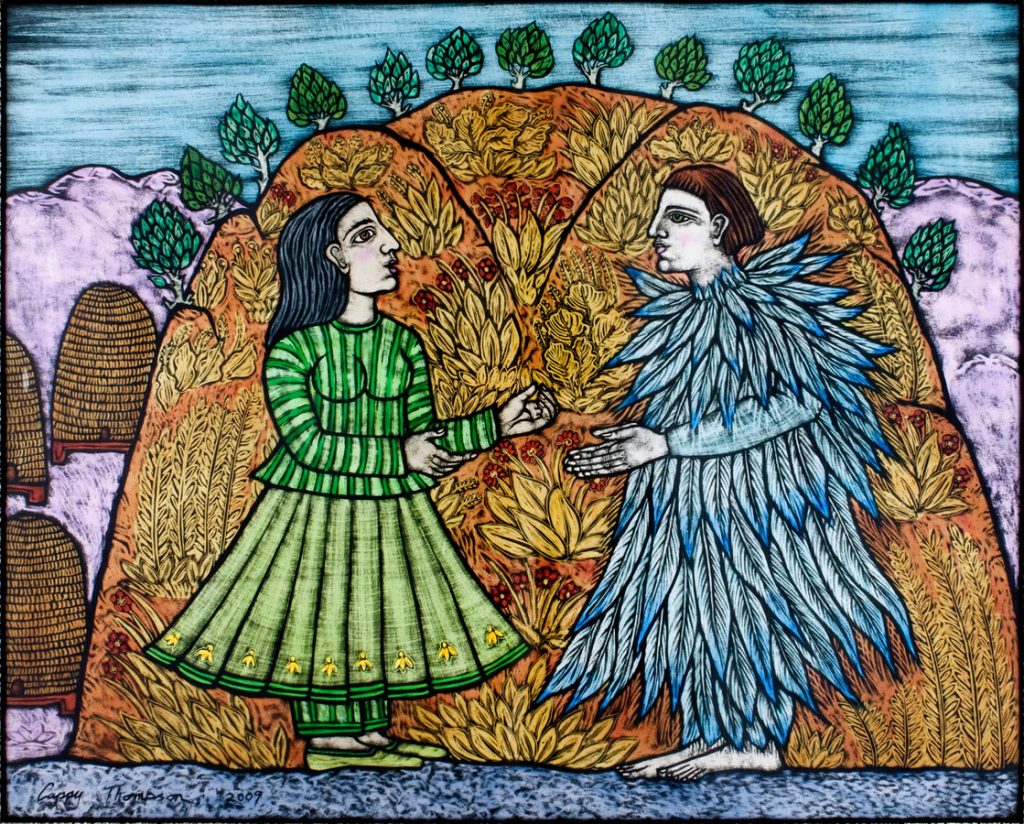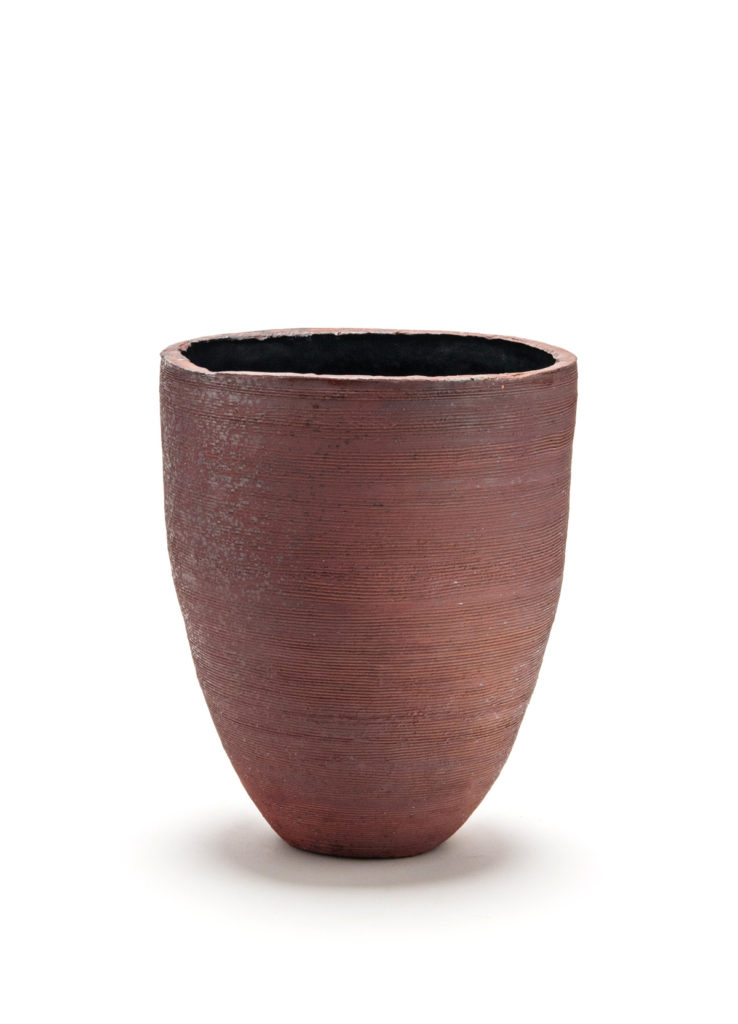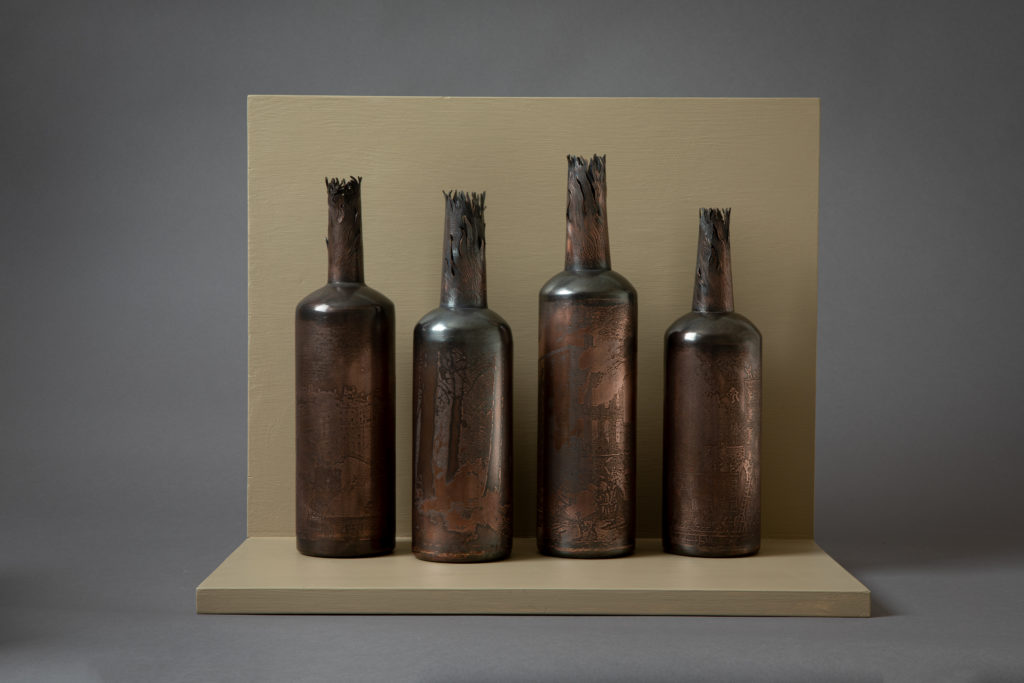Annual Gallery Group Exhibition | 2021
-
About
Clare Belfrage - view profile
Inspired by experiences in the natural world for many years now, Clare Belfrage has forged an international reputation for her distinguished work with detailed and complex glass drawing on blown glass forms.
She has maintained a vibrant practice for thirty years. She has been an active part of artists’ communities, particularly in Adelaide and Canberra, including the glass based studio blue pony, of which she is a founding member, the JamFactory Glass Studio in Adelaide and, Canberra Glassworks where she played the pivotal role of Creative Director from 2009 to 2013.
Clare has had a long involvement in education and has lectured in the glass programs at the University of South Australia, SA, and Ohio State University, USA and Curtin University, WA. She is currently an Adjunct Professor at the University of South Australia. She has also taught numerous workshops throughout Australia, New Zealand, Japan, and the United States.
In addition to Australia, Clare regularly exhibits in North America, Europe, Hong Kong, and New Zealand. Her work has been recognized for its innovation and originality and in 2005 and, 2011, she was awarded the Tom Malone Glass Prize by the Art Gallery of Western Australia. In 2016 she was awarded the inaugural FUSE Glass Prize for Australian and New Zealand glass. In 2018 Clare was the South Australian Living Artist Festival feature artist and subject of the festival’s annual monograph, Rhythms of Necessity, written by Kay Lawrence and Sera Waters.
Clare’s work is represented in major public collections including National Gallery of Australia, Canberra, Corning Museum of Glass, USA, Museo do Vidro, Marinha Grande, Portugal, Tacoma Museum of Glass, USA, National Art Glass Collection, Wagga Wagga, ArtBank, NSW, Art Gallery of South Australia, Art Gallery of Western Australia, Museum and Art Gallery of Tasmania and Northern Territory Museum.
-
Ling Chun
- view profile
I have a drive, a lust and greed for color.
My ceramic forms are “playgrounds for glaze,” and I like to challenge the rules and roles of ceramics by disassociating the material from its stereotypical or culturally accepted uses. Removing still-hot pieces from the kiln, I apply liquid glazes to the surface creating a sizzling sound and a haze of steam until the glaze sticks. It is an intuitive process that emerges through multiple firings and layers of glaze. The work is born of the spontaneous dripping, sliding, running, climbing and crawling that occurs; the movement of the material is my medium.
The use of hair—which I see as a metamorphosis of the clay—serves as an extension of the ceramic process and also transgresses the permanence of clay, resetting the boundaries of ceramics reflected by cultural standards. My work also addresses my transitional stage between multiple cultures and languages through the complex layering of materials onto my ceramic sculptures. I believe contemporary ceramics will serve as a latter-day artifact of our current acknowledgment of cultural identity. It is a material strongly connected with history but never limited just to its heritage—a new age of ceramics will be one where style is no longer restricted to the old forms.
Ultimately, I desire to invite others into my side of the spectrum and to learn and study about how ceramics is more than just clay.
-
Andrea Dezsö
- view profile
Andrea Dezsö is a visual artist who works across a broad range of media including drawing, painting, artist’s books, embroidery, cut paper, animation, sculpture, site-specific installation, and public art. Dezsö’s permanent public art has been installed in three New York City subway stations, at the United States Embassy in Bucharest, Romania and at CUNY BMCC Fiterman Hall in Lower Manhattan. Community Garden, Dezsö’s mosaic in the New York City subway was recognized as Best American Public Art in 2007 by Americans for the Arts. Dezsö is Professor of Art at RISD (Rhode Island School of Design) in Providence, RI, and lives in a small house at the edge of the woods.
-
Marita Dingus
- view profile
Born in Seattle in 1956, Dingus attended Tyler School of Art at Temple University in Philadelphia (BFA, 1980) and San Jose State University (MFA, 1985). She has received a Visual Art Fellowship from Artist Trust (1994), a John S. Guggenheim Fellowship (1999), and the Morrie and Joan Alhadeff PONCHO Artist of the Year Award (2005).
Dingus has had solo shows at Henie Onstad Kunstsenter and The Stenersen Museum, both in Norway (2002, 2006), as well as the Museum of Glass in Tacoma, WA (2005 – 2006). Her work has been included in Nature/Culture organized by The Society for Contemporary Craft in Pittsburgh (2006 – 2008), Outwin Boochever Portrait Competition at the National Portrait Gallery in Washington, DC (2006 – 2007) and 21st Century American Women Artists at the Residence of the United States Ambassador to NATO in Brussels, Belgium (2006 – 2010). Her work is in many regional museums and corporate collections. Dingus currently lives and works in the state of Washington and is represented by Traver Gallery in Seattle.
“I consider myself an African-American Feminist and environmental artist. My approach to producing art is environmentally and politically infused: neither waste humanity nor the gifts of nature. I am primarily a mixed media sculptor who uses discarded materials. My art draws upon relics from the African Diaspora. The discarded materials represent how people of African descent were used during the institution of slavery and colonialism then discarded, but who found ways to repurpose themselves and thrive in a hostile world. I seek to use recovered materials, reconfiguring and incorporating them into pieces of art where possible and appropriate, and to mitigate waste and pollution in all my work. This is a creative challenge, but a commitment I incorporate into my professional and personal activities.”
-
Mel Douglas
- view profile
Mel Douglas is one of the most celebrated artists working in glass today. Douglas’s refined and detailed work employs a minimalist aesthetic along with considered mark-making to engage a dialogue of how line and form can define and defy our understanding of space and volume. Douglas’ work explores the potential, versatility, and flexibility of glass as a material for drawing, and with it, expands our view of glass as a sculptural medium.
In Douglas’s words, “objects and drawings are often thought of as two separate entities. my pieces explore and interweave the creative possibilities of this liminal space, where the form is not just a support for drawing; but a three-dimensional drawing itself. Using the unique qualities of the material and the rich potential of mark-making on and with glass, I am using line as a way to inform, define and enable dimensional space”.
Mel Douglas has worked as an independent studio artist since graduating from the Canberra School of Art, Australian National University, in 2000. In 2020 Douglas was awarded a Ph.d. for her practice-lead research investigating how we can understand studio glass through the aesthetics of drawing. In addition to winning the 2020 and 2014 tom Malone Prize- a prestigious award through which a work is acquired each year into the collection of the National Gallery of Western Australia – Douglas has received several major awards, including the Ranamok Glass Prize in 2002 and the International Young Glass Award in 2007 from the Ebeltoft Museum of Glass.
In 2019 her work was the inaugural acquisition for the Australian National Gallery of Art’s Robert and Eugenie Bell Decorative Arts and Design fund. Douglas’ work is held in the private collections and public institutions internationally, including the Corning Museum of Glass, The Chrysler Museum of Art, the Ebeltoft Museum of Glass, and the National Gallery of Australia.
-
Scott Fife
- view profile
Scott Fife follows in the footsteps of Pop artists from the 1960s and 1970s by focusing on the fads and fascinations of American culture and using non-traditional materials to create his sculptures. Beginning with commercial products, he turned to objects from everyday life and also created a series of portraits of celebrities all fashioned using archival cardboard, glue, and screws. To give these simple things greater cachet, Fife often recreates them at an exaggerated scale making them literally larger-than-life.
-
Gregory Grenon
- view profile
One of the long recognized artists in the Northwest, Gregory Grenon is well known for his work as a colorist exploring the dynamic and expressive qualities of the people he paints.
Gregory Grenon grew up in Detroit where he studied at the Center for Creative Studies. After a stint in Chicago, where he furthered his printmaking skills at Landfall Press, he moved to the Pacific Northwest in the late 1970s. He has had one-person exhibitions throughout the region as well as in New York, Chicago, Boston and New Orleans. Gregory Grenon has received fellowships from the National Endowment for the Arts and the Oregon Arts Commission. His work is in numerous private and public collections including the Hallie Ford Museum of Art, Willamette University, Salem, OR; the Portland Art Museum; the Seattle Art Museum; the Tacoma Art Museum; the Boise Art Museum; and New York Public Library.
-
Mary Josephson
- view profile
As part of military family, which made frequent moves, constant change of scenery was very much a part of growing up. I learned to read people below the surface and make friends quickly. My childhood was spent in the desert communities of the American southwest at a time when Western movies and television shows were at the peak of popularity so the bridge between what is real and imaginary was built for me at an early age. Exploration of the desert terrain revealed an adventure land teeming with life rather than the vast emptiness apparent upon first glance. The revelation that people and things may not be how they seem has been a life-long metaphor for me.
Living in the fertile San Joaquin Valley taught me an appreciation for the cycle of planting and harvesting. The United Farm workers boycotts of the 1960’s and 70’s taught an appreciation for honest labor and brought a rich mix of culture into my life. Living close to the border between the United States and Mexico in Southern California taught me appreciate and respect other cultures and different modes of expression. It also taught me that basic human needs and desires transcend cultures. My experience as a woman artist led me to focus on what it means to be a human, who happens to be a woman now, especially in a society where lasting physical beauty is paramount. The love of color and form has permeated every aspect of my life from earliest memory. It is a very powerful weapon and tool.
Making artwork has allowed me to express how I feel about the world more clearly than any other mode of communication. Through it I am able to express what is constant about the cycle of life and what continuously rings true although metamorphosing and changing
-
John Kiley
- view profile
American, b. 1973, Seattle, USA, based in Seattle and San Francisco, USA.
John Kiley, a renowned artist at the forefront of contemporary glass sculpture, is known for his groundbreaking exploration at the intersection of sculpture, blown glass, and architectural forms. With a unique blend of technical expertise and artistic vision, Kiley’s work transcends boundaries with a dynamic interplay of light, structure, and spatial relationships.
Kiley’s affinity for glass was evident from an early age. As a teenager, he experimented with painting on glass. Later, he refined his skills through formal training and apprenticeships with master artists, including 16 years with Lino Tagliapietra, developing a deep understanding of traditional glassblowing and fabrication techniques.
Kiley’s sculptures frequently incorporate individual elements into larger frameworks, showcasing his meticulous attention to detail and risk-taking approach. Whether creating towering structures, intricate blown glass orbs, or delicately assembled shattered blocks, each series exemplifies his ability to seemingly defy gravity. Through this creative process, he explores the inherent tension between chaos and order, strength and fragility, resulting in works that evoke metamorphosis and the intrinsic beauty of imperfection.
In addition to his solo work, Kiley is known for his collaborative projects with architects, engineers, and other master artists, pushing the boundaries of what is possible within the realm of glass in sculpture. His willingness to experiment with scale, materials, and techniques have earned him widespread acclaim and recognition, with his work featured in galleries, museums, and public spaces worldwide.
-
Michael Peterson
- view profile
Michael Peterson was born in 1952 in Texas and lives with his wife, Jean, on Lopez Island. Introduced to wood in 1975, Michael’s work continues to explore the potential of process and material. Central to the work is evoking a sense of naturalness, landscape, object and coastal influence. Attending Edmonds Community College in the late 1970s, he was impressed with the importance of practicing his craft. His Landscape Vessel series and Coastal Objects series of the1980s and 1990s served as a foundation for his approach to surface and sense of organic form. In 2003, Michael began a series of stacked sculptures that focused on arrangements of an accumulation of multiple elements and the transformative qualities of unseasoned madrone burl. In 2009, Evolution/Revolution, a traveling solo exhibition curated by Bellevue Arts Museum, represented 20+ years of Michael’s work. His work is found in numerous private and public collections throughout the U.S. and England. In 2014 Michael was the recipient of a Washington State Artist Trust Fellowship Award.
“My work evolves out of the process of making and develops its own logic. There are few absolutes. As a Northwest wood sculptor, my approach to surface and organic form has always been grounded in the natural world and is aimed at evoking a sense of naturalness.”
-
Preston Singletary
- view profile
Preston Singletary has become synonymous with the relationship between European glass blowing traditions and Northwest Native art. His artwork features themes of transformation, animal spirits, and shamanism through elegant, blown glass forms and mystical sand carved Tlingit designs.
Singletary learned the art of glass blowing by working with artists in the Seattle area including Benjamin Moore and Dante Marioni. As a student and assistant, he initially focused on mastering the techniques of the European tradition. His work took him to Kosta Boda (Sweden) where he studied Scandinavian design and met his future wife. Throughout his 30+ years of glass blowing experience, Preston Singletary has also had opportunities to learn the secrets of the Venetian glass masters by working with Italian legends Lino Tagliapietra, Cecco Ongaro, and Pino Signoretto. In 2010, he was awarded an honorary Doctor of Arts degree from the University of Puget Sound. Now recognized internationally, Singletary’s artworks are included in museum collections such as The British Museum (London, UK), The Museum of Fine Arts (Boston, MA), The Seattle Art Museum (Seattle, WA), the Corning Museum of Glass (Corning, NY), the Mint Museum of Art and Design (Charlotte, NC), the Heard Museum (Phoenix, AZ), and the Smithsonian Institution (Washington, DC).
Singletary maintains an active schedule by teaching, lecturing, and exhibiting internationally. In 2009, the Museum of Glass in Tacoma, WA, launched a major mid-career survey of his work, entitled “Preston Singletary: Echoes, Fire, and Shadows”. In 2018, he launched a new traveling exhibition with the Museum of Glass, titled “Raven and the Box of Daylight“, which pushes the boundaries of glass as a medium for storytelling. Preston Singletary continues to assert himself as a keeper and teller of stories and as a contemporary master of his craft.
-
Matthew Szösz
- view profile
Matthew Szösz is known for his innovative use of materials and developing new sculpting processes, as well as video work that documents the excitement of making.
Born in Rhode Island, Matthew Szösz has received 3 degress including a Masters in Glass from Rhode Island School of Design. He began producing his own work a decade ago, and has received several awards, including the Jutta Cuny-Franz, a Tiffany Foundation grant, and the Borowsky Prize. He has been an artist in residence at university and arts programs across the US, as well as Denmark, Japan and Australia, and has taught at Virginia Commonwealth University, University of Washington, Toyama, Penland, Pilchuck, Pittsburgh Glass Center, and Public Glass in San Francisco, where he was executive director. He has exhibited at the Renwick Gallery of the Smithsonian, the Boston Museum of Fine Arts, GlazenHuis (Belgium) and the Museum of Art and Design in NYC, among others.
In 2010 he founded Hyperopia Projects, curatorial/ project group based in the USA that advances cross-genre material based sculpture and critical thought. He currently lives and works with his wife, Anna Mlasowsky, in Seattle, WA.
“I am the child of two ideas. The first is the unreconstructed artisanship tradition in which I was raised. The second is the church of ecstatic blue collar Rock & Roll anarchy for which I volunteered. This is the territory that excites me- lying between the sensitive and considered restraint of learned technique and the manic populist energy of the rock throwing iconoclast, described by an wobbling elliptical oscillation between the two. Sophisticated, erudite ideas with feet of clay, a heedless headlong dive into complex and esoteric waters. The friction of these two has been my experience of life, the experience of living within the body and the mind at the same time, each correcting the other in ragged arrhythmia. The opposing pulls of intellect and emotion maintain a tense center that lives and vibrates with their energy.”
-
Dante Marioni
- view profile
Dante Marioni burst onto the international glass scene at the age of 19 with a signature style that has been described as the purest of classical forms executed in glass by an American glassblower. His amphoras, vases, and ewers are derived from Greek and Etruscan prototypes, yet they are imaginatively and sometimes whimsically reinterpreted. His impossibly elongated, sinuous shapes are made with bright and saturated contrasting colors.
Marioni’s sophisticated glass objects evoke the rich tradition of classical Mediterranean pottery and bronzes, and of Marioni’s training in centuries-old Venetian glassblowing techniques with some of the greatest masters in contemporary glass.
The son of American studio glass pioneer Paul Marioni, Dante was raised in a family of artists that includes two well-known uncles, painter Joseph Marioni and conceptual artist Tom Marioni.
Marioni first held a blowpipe at the age of nine. By the time he was 15, he was working after school at one of the first cooperative hotshops and showrooms, The Glass Eye, in Seattle Washington. Although he loved glassblowing, making production studio glass felt limiting.
“The prevailing aesthetic [in American studio glass in the 1970s] was loose and free-form” observed Marioni, “I personally had no interest in that.” Around the same time he met up with Benjamin Moore, another studio glass pioneer, and watched Moore make a perfectly symmetrical, on-center glass form inspired by Venetian glass. It had a dramatic and lasting effect on Marioni, who had not previously seen this type of glassblowing.
Moore soon became a great mentor and friend. “I worked with Benny any chance I got and still use his studio to this day to make some of my really large pieces,” Marioni says. He also studied with other well-known studio glass pioneers, such as Fritz Dreisbach and Richard Marquis, who is widely recognized for his unique interpretations of Venetian decorative techniques.
In 1983, Moore introduced Marioni to Lino Tagliapietra, the legendary maestro who traveled from Murano to teach young American glassblowers at the Pilchuck Glass School in Washington state. “I took classes with Lino throughout the 1990s, and because of him, I received a very classical education in glassblowing. I never missed an opportunity to be around him.”
At the age of 23, Dante Marioni had his first sell-out gallery show in Seattle that featured his Whopper vases. This series introduced his signature, monumental forms and two-color style, and earned him a prestigious Louis Comfort Tiffany Fellowship. After two decades of experimentation, Marioni now creates a diverse range of tall, iconic forms with surface treatments such as murrine (mosaic) and reticello (air bubbles within a net pattern) in an ever-changing array of vibrant colors.
His most recent works are sculptural vessels inspired by the leaf. “Not the leaf in nature, but the stylized forms found in the decorative arts,” Marioni notes. The new vessels are beguilingly intricate, inventive, fresh and tradition-breaking. While his earlier work was about “form, conceived and executed from a design point of view,” his newest works focus on the exploration of color and pattern.
For Dante Marioni, making objects is about the art of glassblowing rather than the creation of glass art, the process rather than the result. Marioni’s elegant works are the brilliant record of his on-going relationship with and exploration of this material.
-
April Surgent
- view profile
April Surgent started working with glass in 1997, at open-access hot shop studios in her hometown of Seattle, WA. She went on to study at the Australian National University, Canberra, Australia where she graduated with honors in 2004. In 2003, she changed her focus from blown to wheel-engraved glass after studying under Czech master engraver Jiri Harcuba at the Pilchuck Glass School. She has been engraving for 20 years, interested in contemporary approaches to the traditional craft of wheel engraving. Notable recognitions for her work include a 2009 Behnke Foundation Neddy Fellowship, a 2016 USA Ford Fellowship, and acquisitions by Iowa State University and the Smithsonian’s, American Art Museum.
Observation and in-depth research inform her work discussing our changing planet. Her interest in natural history, applied science, and climate change have led her from Antarctica to Alaska studying vulnerable species and ecosystems. In 2013, she worked at Palmer station as a recipient of the National Science Foundations’, Antarctic Artist and Writers Program and in 2016 as a volunteer field biologist for the Hawaiian Monk Seal Research Program. Most recently Surgent has worked in Southwest Alaska with the US Geological Survey assisting with pelagic food web research. Surgent lives and works on the Quimper Peninsula in Washington state.
-
Cappy Thompson
- view profile
Cappy Thompson has been painting glass since 1976. She started her career as a stained glass painter and became internationally recognized for her reverse-painted narratives on glass using the grisaille (or gray-tonal) painting technique. Her works have been shown and collected internationally. Recent works include architectural-scale public art installations in painted glass at Sea-Tac Airport, The Museum of Glass in Tacoma, and other Public sites.
“For me, as a narrative painter, the issue has always been content. The issue wasn’t glass, the material that I chose some 37 years ago. Nor was it the painting technique—grisaille or gray-tonal painting—that I taught myself to use. My work—which spans several decades and a variety of scales from the intimate to the monumental—has always been driven by content.
Early in my career I was drawn to the images, symbols and painting of the medieval period—but not just the Christian tradition of Western Europe. I loved the content of Hindu, Pagan, Judaic, Buddhist and Islamic painting as well.
These were images created before the invention of “art” as we know it—before painters controlled the content of their work. These were works decreed by religious and political authorities to depict the magnificence and beauty of the natural and divine order.
What I loved was the naïve naturalism and devout simplicity of that period—like the folk art of any period.
I started by designing and painting glass panels based on the narrative content of mythology, fables and folktales, drawn in oblique projection, with transparent jewel-like colors. Later I painted similar narratives on glass vessels.
About fifteen years ago I found myself moving away from mythological narrative and toward compositions on vessels that drew upon images and themes from my personal life. Elements would drift up and assemble into picture-poems that seemed to have a life of their own.
I began to understand these works as reflections of the spiritual and psychological issues in my life. I painted members of my family and myself in a kind of autobiographical fantasy, working with the mythopoetic materials of my life. I cast myself into scenes from various spiritual traditions.
This began an autobiographical exploration of world culture and spirituality that continues to the present.
I see now, after more than three decades of work, that I am like those medieval painters striving to express magnificence and beauty. But my expression focuses on the human experience of goodness, of hope and of love”.
-
Anne Traver
- view profile
Anne Traver [b. 1952] began work with clay five years ago following a long career as a graphic designer, brand strategist, design firm owner, and design professor. After training in workshops, community studios, and intensive courses in Italy, she now has an individual studio practice in Seattle. Traver describes her interest in “diminishing the functional nature of the pot with a little push towards the forms of nature” and “the remains of ceramic objects as signposts of human history.” In her work, Traver captures the beauty of textured and weathered surfaces and the excavation and erosion of time.
“I make objects that occupy the space between functional pottery and sculpture. I am fascinated by the way that clay in its rigid, fired state is able to reveal its former soft and malleable qualities. Deflation, folds, surface– the effects of gravity, time, and atmosphere tell the object’s history. A minimalist geometry often divides the vessel, creating a horizon by way of contrast.
A modernist simplicity and elegance of form emerging from nature is my aim. Not precious or delicate, the work has a certain heft; a narrow palette of hues — black, white, earth, rust; and an economy of means.” Anne Traver
-
Merrill Wagner
- view profile
Wagner works in a wide range of media, including drawing, painting, time-based projects, book works and sculptural interventions. Her work aligns itself with both the principles of Minimalism, and the ethics of an alchemist. She manipulates materials to make works that are about the passing of time and material transformation.
A big departure from her oil on canvas works of the 60’s, the tape works from the 70’s showcase Wagner’s unique process of using tape (cloth, masking, Gaffer’s, Permacel) to transfer oil pastel pigments onto plexiglass. Tiffany Bell explains that “having used tape as an incidental tool in her painting, she became fascinated with it as something to mark on. Her preoccupation with tape led to a consideration of process and the role of chance in the creative procedure. She started applying bands of tape to paper (…) and marking the resulting surfaces all over with chalk. A second layer of tape was then layered on top, removed, and affixed to Plexiglas. Seen from the opposite side, traces of the original drawing were thus incorporated into a new context.”
Wagner is an artist indicative of her time and place. Robert Storr summarizes, “Wagner, materialist, formalist, empiricist, and poet of the given and the accidental as well of the systematically altered is, in this every respect, an all-American artist to the core.”
-
Dick Weiss
- view profile
Weiss was born in Everett Washington and earned his Bachelor of Arts degree from Yale University. He began teaching at Pilchuck Glass School in 1982, and has completed commissions for the Bellevue Art Museum, Washington, the Port of Shanghai, Shanghai, China, the Seattle-Tacoma International Airport, Washington, and the University of Washington, Seattle. His work can be found in impressive collections around the world including the Victoria and Albert Museum in London, and the Corning Museum of Glass in New York.
-
Lynn Whitford
- view profile
I have now been doing hollowware – hammering 3D forms out of flat sheet metal – for nearly 30 years. It is a very slow process but satisfies my need to do something expressive, which involves both mind and body in a kind of conversation. What has remained constant in my work is an interest in the beauty of ordinary objects, and in the way objects can seem to have a life of their own and to connect us to fragments of our history. I usually conceive of the bottles in relationship to one another: as we are highly social, so are they. Some are explicitly stand-ins for humans, others less so. What is different in this new work is the addition of words to many of the bottles. The relationship of objects and language has always interested me, but the only evidence of this in my work was in the titles.
-
Nancy Callan
- view profile
Having firmly established herself as one of the preeminent contemporary artists working in glass sculpture, Nancy Callan’s artistic voice has never been more resonant than in her forthcoming exhibition at Traver Gallery. In her new body of work, Callan celebrates and draws on her early experience as a graphic designer to bring pattern and color to the forefront. Her colorful blown forms become a beautiful canvas for the intricate overlapping, woven, organic, and playful cane and murrine designs she creates.
Building upon the techniques she mastered during her 19-year tenure on Lino Tagliapietra’s team, Callan creates cane-glass patterns that are completely her own. Like drawings in three dimensions, lines rhythmically undulate in and out of the rich glass colors. Nancy Callan’s works are exuberant, energy filled, and delightfully bold. We are proud to be the first gallery to show this new body of work and thrilled to introduce it to you, our collectors.
Nancy Callan earned her BFA from the Massachusetts College of Art in 1996. Her numerous awards include the Creative Glass Center of America Fellowship and residencies at the Museum of Glass (Tacoma, WA), The Toledo Museum of Art, Toledo, OH, the Pittsburgh Glass Center, Pittsburgh, PA, and The Chrysler Museum, Norfolk, VA. She has offered advanced glassblowing workshops at the Pilchuck Glass School in Stanwood, WA, the Pittsburgh Glass Center, Haystack Mountain School in Deer Isle, ME and Penland School of Crafts in Ashville, NC. Her work can be found in the permanent collections of the Shanghai Museum of Art, Shanghai, China, The Museum of Glass, Tacoma, WA, the Museum of Glass, Corning, NY, the Muskegon Museum of Art, Muskegon, MI, and the Museum of Northwest Art, La Connor, WA, as well as in numerous private
collections.
